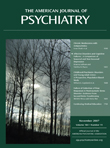I asked the woman why she had sought a consultation. She replied rapidly, nervously, and simply: “I think I’m having a breakdown.” That word! It was like hearing the name of an old friend.
I’ve been a psychiatrist for more than three decades, and in taking a history, I’ve had any number of patients tell me that they’d had—or were having—a “nervous breakdown.” I’ve nodded and otherwise expressed understanding but assumed little. But over the last 5 years very few have used the term. It is disappearing from our patients’ set of descriptors. Why?
And why did it once have such idiomatic prominence for the general public? The term does not exist in DSM-IV or ICD-10—or in their predecessors. It has no scientific definition and has never been part of the mental health professional’s lexicon.
The Cambridge academic German Berrios (personal communication) informed me that “breakdown” is a 19th century construction, initially used to refer to breakages and fractures in machinery and leading to the need for “breakdown gangs” (i.e., teams of navvies whose job involved addressing the mechanical disruptions to the functioning of railways). Metaphorical uses of the term followed, particularly in reference to failure in personal intentions and plans.
Berrios suggested that it was only in the second half of the 19th century that its metaphorical connotations were extended to the brain—and later to the mind. Its initial association was not to depression, anxiety, or psychosis but to symptoms associated with mental and physical exhaustion and relating to 19th century constructs such as “neurasthenia,” “the vapors,” “spinal irritation,” and “nervous prostration.” Because neurasthenia (in Greek meaning “lack of nerve strength”) imputes a physical basis (in the nerves) rather than psychological weakness, it was an intrinsically less stigmatizing phrase than “mental illness,” and we can assume that the same stigma-muting advantage held to having a “breakdown.” Berrios observed that its use extended to neurotic disorders in general (particularly those that were incapacitating or required hospitalization) and that its use as a euphemism for any form of mental disorder (including psychosis) appears to have started only after World War I.
Two North American studies have sought in the last decade to identify the characteristics and meaning of a “nervous breakdown” to the layman. A study of one community sample
(1) indicated that people weighted anxious and depressed features (but not psychotic, phobic, manic, or somatic features) and viewed nervous breakdown as a time-limited rather than chronic condition, and as a reactive illness, in being caused by external stressors. The authors concluded that it most closely resembles the diagnosis of adjustment disorder with mixed anxiety and depressed mood. The other study
(2) found that respondents viewed a “nervous breakdown” as subsuming neurotic and mood disorders—and being distinct from “mental illness,” which was seen to include psychotic disorders, including violent behavior.
Rapport and colleagues
(1) suggested that it has “unique linguistic value to laypersons,” reflecting their lack of awareness of specific diagnostic terms. Informal support for that interpretation is reflected by increasing numbers of patients who present these days offering their own DSM-derived diagnosis, be it “major depression,” “dysthymia,” or “bipolar lite.” We can therefore anticipate the perfectionist who might nominate “300.02 generalized anxiety disorder with comorbid 301.4 obsessive-compulsive personality disorder, doctor” in response to the psychiatrist’s initial open-ended inquiry as to how he or she is feeling.
But is there not a more specific home base for “breakdown”? Over the last two decades, our research team has sought to identify clinical features specific to melancholia. Although we weight clinically observed signs of psychomotor disturbance, we continue to seek “symptoms” that have specificity to the melancholic depressive subtype. Diurnal mood and energy changes, as well as profound mood nonreactivity and anhedonia have appeared useful but extremely subjective. As observed previously
(3), however, I continue to be struck by how often those with melancholia describe a physical state of “mechanical failure.” Their descriptors include “an inability to get out of bed to wash” and feeling as if “walking through thick sand weighed down by a dozen wet blankets.”
Such anergia evokes a mechanical “breakdown” construct with some specificity to melancholia. Thus, we now include as a screening question for melancholia: “During depressive episodes, do you experience a mechanical breakdown, in essence, finding it difficult to do basic things like get out of bed and bathe?” and so incorporate an anergic mechanistic construct compatible with melancholia’s characteristic psychomotor disturbance and quintessential corporeality.
“Breakdown” once weighted an inner symptomatic world of psychological distress and torment. Its psychopathological home is logically melancholia, but we can afford to abandon its use in an environment in which diagnostic precision is growing and stigma diminishing.

